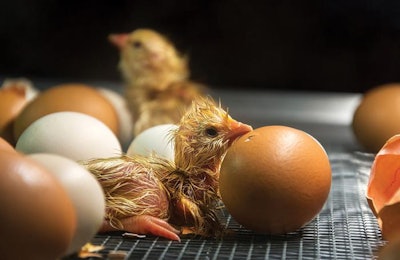
Zoran Kolundzija, istockphoto.com
United Egg Producers has pledged to eliminate the culling of day-old male chicks by 2020 or as soon as economically feasible alternatives are available. There are various methods of in ovo sexing being developed by at least three competing groups.
Read the entire report about in ovo sexing techniques exclusively in the October issue of Egg Industry.
The University of Delaware; Dresden University of Technology and the University of Leipzig, both in Germany; and Leiden University in the Netherlands each are developing their own techniques to determine the sex of an embryo in ovo.
One process uses a machine vision system, coupled with computer algorithms using light, to determine the sex of the embryo during the first 30 hours of incubation. Another technique utilizes near-infrared (NIR) spectroscopy to determine the sex of the embryo after a small hole is cut in the eggshell. Yet another method for identifying the sex of embryos in incubation uses mass spectroscopy.
It is unknown whether any of the techniques for in ovo sexing of embryos will ever become commercially viable. The U.S. Poultry & Egg Association has recently funded two projects at land grant universities in the U.S. to study procedures for euthanasia in chicken and turkey hatcheries to improve the methods used in case an efficient means of in ovo sexing cannot be found in the near future.
You’ll also learn about:
- Pullet feeding tips to increase egg production
- Hard choices facing the U.S. egg industry amid the cage-free rush

















